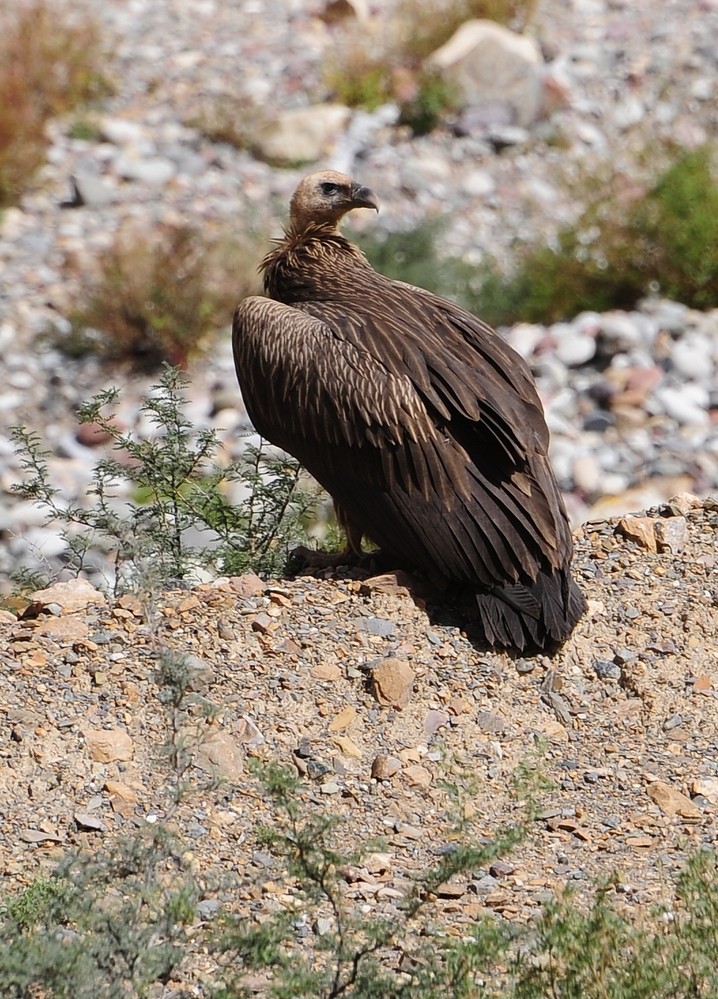Himalayan Vulture
A species of Griffon Vultures and Allies, Also known as Himalayan Griffon Vulture Scientific name : Gyps himalayensis Genus : Griffon Vultures and Allies
Himalayan Vulture, A species of Griffon Vultures and Allies
Also known as:
Himalayan Griffon Vulture
Botanical name: Gyps himalayensis
Genus: Griffon Vultures and Allies
Content
Description General Info
Description
This is a huge vulture, and is perhaps the largest and heaviest bird found in the Himalayas. It is the largest of the species in the Gyps genus, seemingly averaging larger in every method of measurement than its relatives. Adults have a ruff that is long and pale brown with white streaks. The ruff feathers are long and spiky. The head is covered in down which is yellowish in adults but whitish in immature vultures. The underside and under-wing coverts are quite pale brown or buff, being almost white in some specimens. The legs are covered with buffy feathers and the feet can vary from greenish grey to white. The upperside is unstreaked, pale buff with the tail quills, outer greater coverts and wing quills being a contrasting dark brown. The inner-secondaries have paler tips. The pale blue facial skin is lighter than the dark blue in Gyps fulvus with this species having a yellowish bill. In flight the long fingers are splayed and there is a pale patagial stripe on the underwing. The wing and tail feathers are dark and contrast with the pale coverts and body, one of the best methods to distinguish this species from the slightly smaller griffon vulture. The feathers on the body have pale shaft streaks. They are distinguished from the Indian vulture (G. indicus), which can somewhat similar in color by being much larger with a stouter, more robust bill. Younger birds have a pale parts to the bill and tend to have buffy-white streaks on the scapulars and wing coverts contrasting with dark brown underparts. They are similar in size to the cinereous vulture (Aegypius monachus), which has a slightly shorter overall length but in large specimens can weigh more than the Himalayan vulture. Weight in Himalayan vultures can range from reportedly as little as 6 kg (13 lb) to as much as 12.5 kg (28 lb). A field study estimated an average of 9 kg (20 lb) for the Himalayan vulture, but weights can vary with conditions from 8–12 kg (18–26 lb). The wingspan of birds varies greatly depending on the method used to measure them and published measurements vary from 2.56 to 3.1 m (8.4 to 10.2 ft), a similar wingspan range as a cinereous vulture. 
Size
1.5 m
Nest Placement
Cliff
Feeding Habits
Himalayan Vulture solely consumes carrion, particularly domestic yak, avoiding offal and preferring flesh. It soars for food, may wait by carcasses, and dominates at carrion except when larger predators are present. Unusually, himalayan Vulture ingests pine needles for reasons unknown.
Habitat
The himalayan Vulture thrives in rugged terrains such as mountains and gorges as well as high-elevation steppes. These birds are commonly associated with expansive, open environments characteristic of the greater Himalayan region. During winter, they may descend to slightly lower altitudes, with some juveniles occasionally venturing onto adjacent plains.
Dite type
Scavenger
General Info
Feeding Habits
Bird food type
Distribution Area
The Himalayan vulture lives mainly in the higher regions of the Himalayas and the Tibetan Plateau at the elevation range of 1,200–5,500 m (3,900–18,000 ft). It is distributed from Kazakhstan, Uzbekistan, Kyrgyzstan, Tajikistan, Afghanistan and Pakistan to India, Nepal, Bhutan to western China and Mongolia. Juvenile birds may however disperse further south, and vagrants have been recorded in Thailand, Burma, Singapore and Cambodia. 
Species Status
Not globally threatened.
